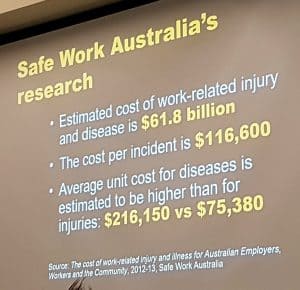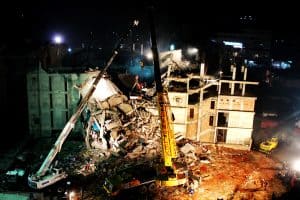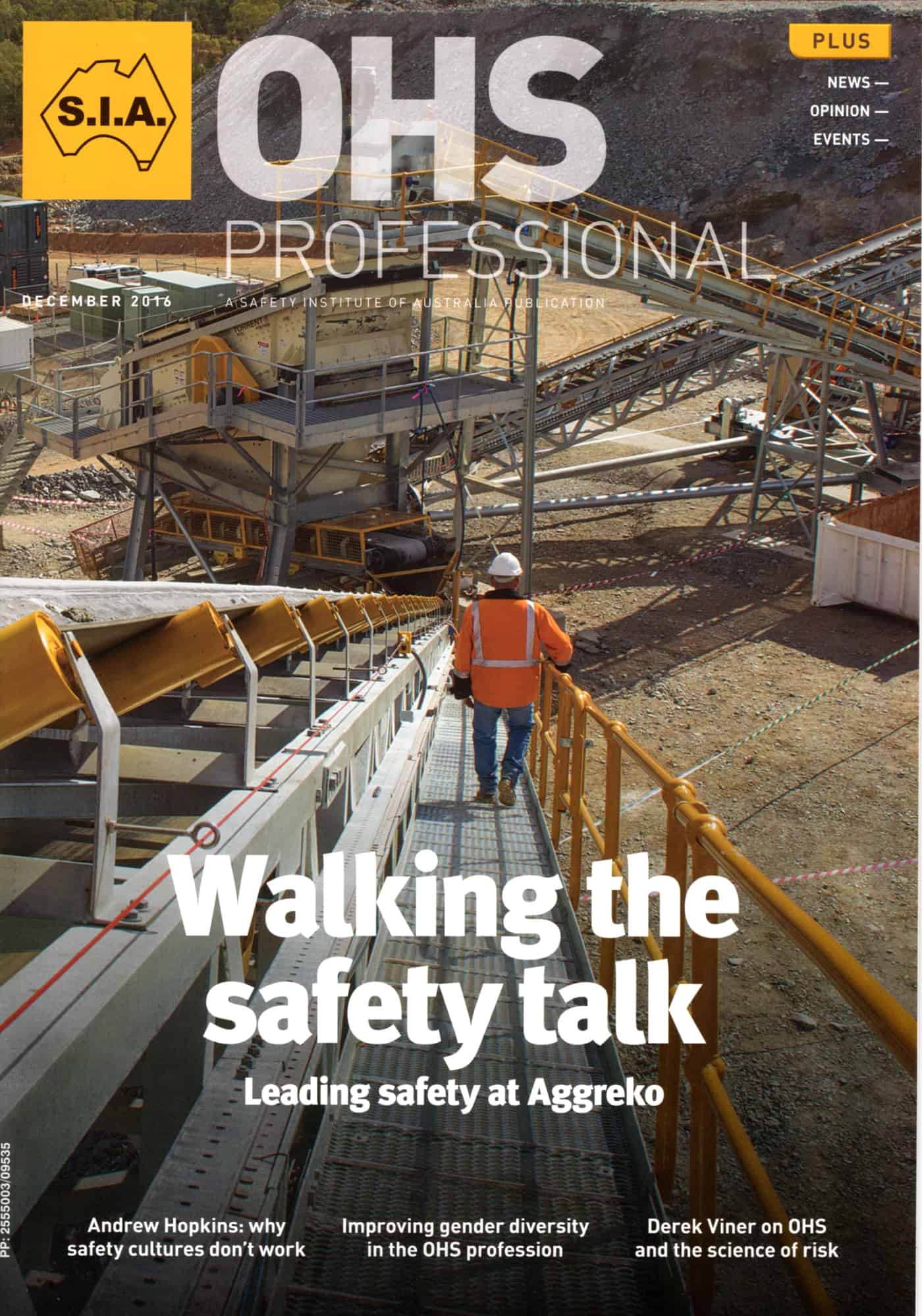Being a member of a local safety group provides nuggets of occupational health and safety (OHS) information from speakers and members in a broad range of industries and occupations. The May 2017 meeting of the Central Safety Group at which Wayne Richards spoke provoked several OHS thoughts about safety, leadership and culture. One was that Transdev…
Category: corporate social responsibility
Asbestos – out of sight but not out of mind in Asia
By Melody Kemp

Asbestos resembles polio. Just when you think it’s beaten, it returns like some ghoul. If you think this is overly dramatic, last year Laos was struck by a polio outbreak. This year we learned that Laos now ranks amongst the globe’s major importers of asbestos. And it’s driven by cynical market forces targeting poorer nations, inadvertently promoted by international aid. Continue reading “Asbestos – out of sight but not out of mind in Asia”
Big business seminar adds to OHS knowledge library
 The latest broadcast in Safe Work Australia’s Virtual Safety Seminar (VSS) series is aimed at the executive level of management and entitled “Why big business needs to lead work health and safety“. One of the attractions of the VSS is that Safe Work Australia is able to draw upon senior and prominent business leaders who do not often talk occupational health and safety.
The latest broadcast in Safe Work Australia’s Virtual Safety Seminar (VSS) series is aimed at the executive level of management and entitled “Why big business needs to lead work health and safety“. One of the attractions of the VSS is that Safe Work Australia is able to draw upon senior and prominent business leaders who do not often talk occupational health and safety.
This seminar included contributions from Diane Smith-Gander, Dean Pritchard, Marcus Hooke and was hosted by Jennifer Hewett.
Several important perspectives were discussed that would be helpful to the intended audience but there were also some comments that deserve contemplation.
Poor worker safety through gov’t disinterest and high unemployment

The current edition of SouthAsia magazine has a short report on occupational health and safety (OHS) in Bangladesh that illustrate the political and social challenges for workers and citizens in a country. The article, “Poor Workplace Safety” (not available online) states that government data for 2016 list more than 1,225 workers killed and over 500 injured. After these figures, and the fact that Bangladesh has a history of catastrophic workplace disasters, the author, Mohammad Waqar Bilal, states
“In fact, the issue of workers’ safety has never been considered by the government on a priority basis.”
Continue reading “Poor worker safety through gov’t disinterest and high unemployment”
The fashion of safety culture
 In 2016, Professor Andrew Hopkins urged occupational health and safety (OHS) professionals to abandon safety culture. In the December 2016 edition of OHS Professional magazine ($), he writes further about this position.
In 2016, Professor Andrew Hopkins urged occupational health and safety (OHS) professionals to abandon safety culture. In the December 2016 edition of OHS Professional magazine ($), he writes further about this position.
Several of Hopkins’ statements make the reader stop, sit up and reflect. He writes
“What people do is something company leadership can indeed control, while what people think is neither here nor there“(page 28 – emphasis added).
POW!, there goes a lot of the safety training that is provided.
Two old SafetyAtWork podcasts remain relevant
Over the Christmas break I was cleaning out some files and found some old SafetyAtWork podcast files that used to be on iTunes around a decade ago. The information and perspectives remain important and to preserve the files I have uploaded them to SoundCloud.
One is an interview with Professor Michael Quinlan shortly after the Beaconsfield mine inquiry. The other is a presentation to the Central Safety Group by freelance journalist Gideon Haigh about the corporate approach to asbestos and compensation off the back of the publication of his Asbestos House book.
More will be posted over the next few weeks.
CEO-speak and safety culture – losing track of what matters most
The BP Deepwater Horizon disaster has faded to become another safety leadership failure to be discussed in the OHS and risk management courses but some new research ($ paywall) in Critical Perspectives on Accounting provides a fresh perspective on BP’s safety culture and leadership prior to the major disaster by deconstructing the speeches of the the then-CEO, Tony Hayward.

